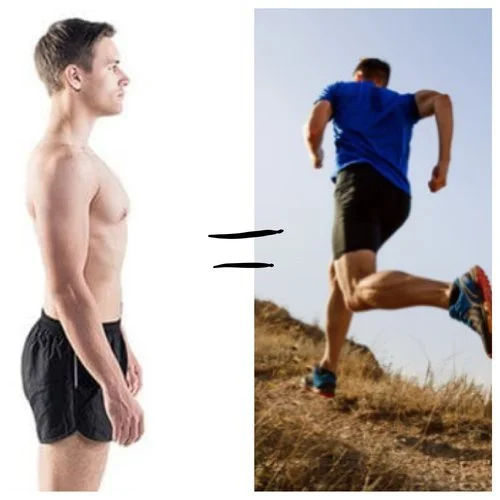Why Prioritize Posture?
By: Alex Pennington 06/29/2019
Good posture is the balance of the physical body from one joint to another. This balance creates a constant harmonious tension throughout the body, making the body feel strong and connected. Today, we live a mostly sedentary lifestyle that consists of daily driving, computer work, and poor diet. Each of these things can lead to poor posture habits that take a toll on your body over time.
Sitting
Some of the dysfunctions sitting can cause are tight hip flexors, Lordosis (deep curve inwards of the lower back), Kyphosis (forward tilting of the thoracic spine), inadequate breathing, neck pain, and tension headaches. For many years, techniques and inventions have come and gone that intended on trying to fix these problems. Some of these you’ve probably heard of are the Balance Ball and the Posture Brace. While I personally feel that the Balance Ball has some benefits, one of the big problems here is that sitting is still being done while on the ball. There are still tightness and weaknesses being caused in the lumbopelvic hip complex because of this position. But there is an opportunity here to strengthen the upper spine and neck. With a proud chest and a chin tuck, we can build some structural strength into these areas.
Maybe one of the most misunderstood tools out there is the Posture Brace. On paper it looks pretty impressive. Something that puts you into a position of “good posture” while being used (We’ll dive deeper into what good posture is a little later). The problem here with the Posture Brace lies in with the body not doing any work to maintain the position of posture. Think of a time when you may have broken a bone and had to be put into a cast. Once the broken bone mended, how did the muscles of the area feel afterwards? Probably very weak and took some time to build the strength back. This is because the muscles that were casted had atrophied and the neuromuscular (Nerve/muscle connection) system had been shut off. This is the same here as the Brace. Your bones may be put into a “better” position, but the muscles here are completely turned off. Over time this creates even more weaknesses around the spine including atrophy and the neuromuscular connections that tell us how to move with proper muscular support.
So, what’s the solution?
In order to find the solution to have better posture and manage the pains that are associated with sitting is to first understand WHAT IS PROPER POSTURE? Proper posture is more than just sticking out your chest. It’s knowing what to do with your entire body from the ground up. Let’s start with a common position, standing. Standing is one of the most fundamental body positions of the human species and how one stands can tell a lot about the potential injuries and pains someone may develop or currently deal with. So, let’s start from the ground up, lets build a strong foundation!
Foot positioning: The feet should be about hips width apart and facing completely forward
Knee positioning: The knees should also be about hips width apart and facing forward
Hip positioning (side view): The hips should be stacked over the knees and ankles. Not in front or behind
Hip positioning (posterior view): The hips should be tilted posteriorly and create a flatness of the lumbar spine
Abdomen positioning: Abdomen should be retracted and not protruding out excessively.
Rip cage positioning: Ribs should be high and creating a straightness of the thoracic spine. There also should not be a leaning to either side
Shoulder positioning: Shoulders should be elevated and stacked over the hips. Depressed shoulders mean shoulder blade compression and can lead to back and neck pain.
8. Neck positioning: The chin should be pulled/tucked in, creating a straightness to the cervical spine. There also should not be a lean of the head to either side
So, how’d you do?
Could you get everything into alignment? If so, awesome! If not, that’s ok too! There are ways to build your muscles to do this naturally(intrinsically). This is where posture training comes in.
Over the years, there's been many different systems all claiming that they produce results, and that they will take you out of pains and poor posture. These include Chiropractors, body building exercises, and active release therapy (to name a few). But what many of them lack in is their before and after results. And not just one example of a result, but a continuous improvement of an individual over a period of time, a posture and alignment that improved month by month. Not a quick fix that only helped a bit for a day.
The only consistent system that has shown these kinds of continual results is a system called Functional Patterns. And if these results weren’t enough. Many of the Certified Trainers under Functional Patterns, have also shown alignment improvements in actual movements like walking, running, and other movements. No one else is doing this. This also includes individuals with neuromuscular disorders, spine issues like scoliosis, and other physical/mental handicaps.
Why does Functional Patterns work so well?
The people at Functional Patterns have figured out how exactly our body is supposed to move when walking, running, and other tasks. From this base, they have developed a system for building muscles to work together(i.e. patterns) to make someone move better. The idea is that OUR BODIES ARE DESIGNED TO WALK AND RUN, and everything else our bodies can do revolve around this design. By building strength in this manner, we see great results from people who do not move very well and others who get themselves out of chronic pain.
How do I learn Functional Patterns?
Fortunately, the company has put out a lot of great information on YouTube with hundreds of videos on how to help correct certain imbalances of the body. This is a great place to start. Once you get an idea of how to correct some of your imbalances, I recommend finding a Certified Trainer that can show you more and dive deeper into corrective exercises that will enhance your posture through assessments like GAIT ANALYSIS, specific strength exercise techniques, and mobility tests.
Here’s a short video on Functional Patterns: https://youtu.be/Ge5LkFxJ104
Keep that head up! The answers to long term health and feeling better are out there! It's your choice to take that next step.


